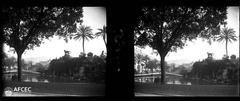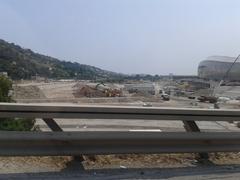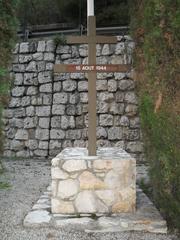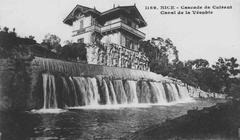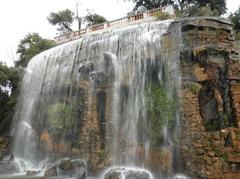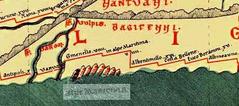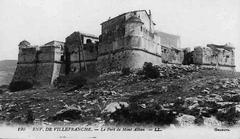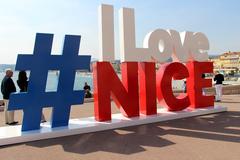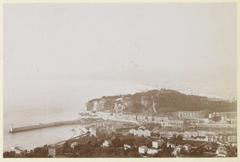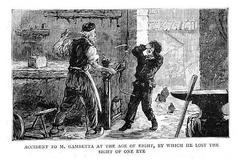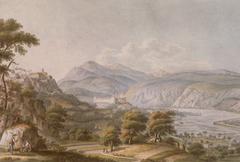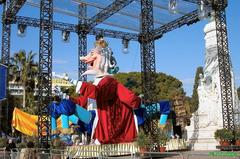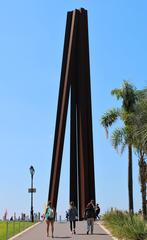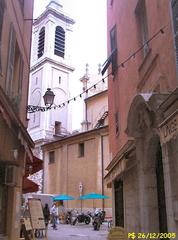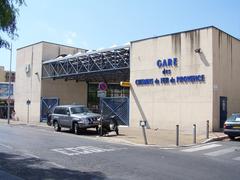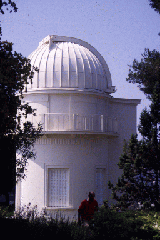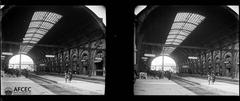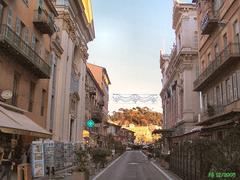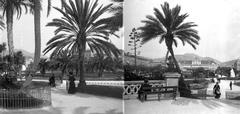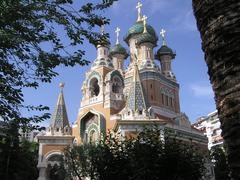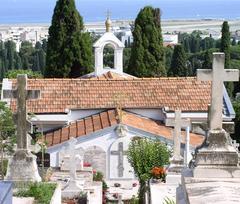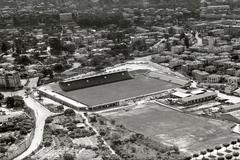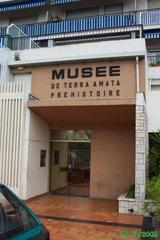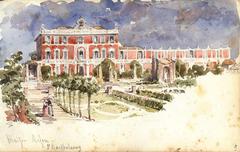
Abbey of St Pons, Nice, France: Visiting Hours, Tickets, and Historical Sites Guide
Date: 04/07/2025
Introduction
The Abbey of Saint Pons (Abbaye Saint-Pons de Nice) is one of Nice’s most historically significant landmarks, embodying over a millennium of religious devotion, architectural evolution, and cultural heritage. Founded during the reign of Charlemagne in the late 8th century, the abbey was established to honor Saint Pons, a Roman martyr, and has since transformed through Romanesque and Baroque periods, reflecting the changing spiritual, artistic, and social currents of the French Riviera. Today, the abbey welcomes visitors eager to explore its storied past, distinctive architecture, and tranquil cloisters. Whether you are a history enthusiast, architecture lover, or a cultural traveler, this guide provides detailed information on the abbey’s history, visiting hours, ticketing, accessibility, guided tours, and travel tips to enhance your experience (French Riviera Traveller; Wikipedia; Nice Presse).
Table of Contents
- Historical Overview
- Visiting the Abbey of Saint Pons
- Frequently Asked Questions (FAQ)
- Summary and Recommendations
- References
Historical Overview
Founding and Early History (8th–9th Centuries)
The Abbey of Saint Pons is among the oldest monastic institutions on the French Riviera. Tradition and historical documents indicate it was founded between 774 and 800 CE, commissioned by Charlemagne and established under the direction of Siagrius, Bishop of Nice, to honor the third-century martyr Saint Pons. The site was entrusted to the Benedictine order, whose monks played a crucial role in the region’s spiritual and cultural development. Its proximity to the ancient Roman settlement of Cemenelum (modern Cimiez) gave it strategic religious and political influence (Nice Presse; Wikipedia).
Medieval Expansion and Influence
By the 12th century, the abbey had become the wealthiest monastic institution in Nice, owning more than half of the city’s land and property (Wikipedia). Its monks were instrumental in founding churches throughout the Côte d’Azur, extending their religious, economic, and cultural reach. The abbey’s significance is further highlighted by the fact that the surrender of Nice to the House of Savoy was signed within its walls in 1388. The abbey faced adversity, including destruction by Saracen raiders in 890 and damage during the Turkish siege in 1543, but it was repeatedly rebuilt and restored (Tripomatic).
Papal Reforms and Decline
In the 14th century, papal intervention altered the abbey’s trajectory. Pope Urban V’s 1366 bull placed the abbey under the jurisdiction of the Abbey of Saint Victor of Marseille, diminishing its independence. Internal disputes and the broader decline of the Benedictine order led to a gradual reduction in the abbey’s influence and wealth (Wikipedia).
Baroque Transformation
A major architectural revival came in the 18th century, when the original medieval church was replaced with a striking Baroque building. Construction began in 1725 and was completed in 1743, introducing a distinctive convex façade and ellipsoidal plan influenced by Ligurian and Italian Baroque styles (French Riviera Traveller; France Voyage). The richly decorated interior and crypt containing Saint Pons’ relics remain highlights for visitors.
Modern Era and Restoration
The annexation of Nice to France in 1860 led to the dissolution of the monastic community and state ownership of the abbey (Wikipedia). The property served various secular purposes, including as part of the Hospital of Saint Roche (Tripomatic). Recognized as a historical monument in 1913 and further protected in 1949, the abbey underwent extensive restoration in the 21st century and reopened to the public in 2019 (French Riviera Traveller).
Visiting the Abbey of Saint Pons
Opening Hours
- Open: Tuesday to Sunday, 10:00 AM to 6:00 PM
- Closed: Mondays and public holidays
- Note: Some areas or special events may have different schedules; always confirm before visiting.
Tickets and Admission
- Entry: Free for the abbey church and cloisters
- Guided Tours: Available on weekends and by appointment (fees may apply)
- Special Events: Some exhibitions or events may require tickets; check the official Nice tourism website for current details.
Accessibility
- The site is wheelchair accessible, with ramps and elevators available in key areas.
- Due to the historic nature of the site, some areas may remain challenging for those with limited mobility; contact the abbey or the Nice Tourist Office for specific information.
Guided Tours and Events
- Regular guided tours provide in-depth insights into the abbey’s history and architecture, available in French and sometimes in English during peak tourist seasons.
- Seasonal cultural events, concerts, and exhibitions are often hosted at the abbey.
Travel Tips
- Getting There: The abbey is accessible via public transport—bus line 15 is the most direct option (Lignes d’Azur). Taxis, rideshares, and cycling are also viable.
- Parking: Limited on-site street parking; public transport is recommended during busy periods.
- What to Bring: Modest attire is required; bring water and snacks, especially in warm weather. Photography is permitted in exterior and cloister areas, but may be restricted inside the church.
Nearby Attractions
- Matisse Museum
- Roman Ruins of Cimiez
- Nice Archaeological Museum
- Cimiez Monastery
- Parc du Vinaigrier
Frequently Asked Questions (FAQ)
Q: What are the Abbey of Saint Pons’ visiting hours?
A: Tuesday to Sunday, 10:00 AM to 6:00 PM; closed Mondays and public holidays.
Q: Do I need a ticket to visit?
A: Admission is free for the church and cloisters; tickets may be required for special tours or exhibitions.
Q: Is the abbey accessible for visitors with reduced mobility?
A: The site is generally accessible, though some areas may be challenging; contact the visitor center for assistance.
Q: Are guided tours available?
A: Yes, on weekends and by appointment; tours are available in French and sometimes in English.
Q: Can I take photographs?
A: Photography is permitted in exterior and cloisters, but may be restricted in the church.
Summary and Recommendations
The Abbey of Saint Pons stands as a captivating emblem of Nice’s spiritual and architectural legacy, weaving together centuries of history from its Carolingian foundation to its Baroque transformation and modern preservation. Its free access, informative guided tours, and proximity to other iconic sites like the Matisse Museum and the Roman ruins of Cimiez make it a must-visit for anyone interested in the rich cultural tapestry of the French Riviera. Travelers are encouraged to verify updated visiting hours, ticketing, and event schedules through official channels to ensure a rewarding experience. Enhance your journey by exploring nearby attractions and using resources such as the Audiala app for curated guides and local tips (French Riviera Traveller; Wikipedia; Nice Tourism).
References
- Abbey of Saint Pons de Nice, Wikipedia
- Nice Presse: Les Secrets de l’Abbaye Saint-Pons
- French Riviera Traveller: Saint Pons Abbey
- France Voyage: Abbey of Saint Pons
- Nice Tourism: Official Website
- Lignes d’Azur Public Transport



















